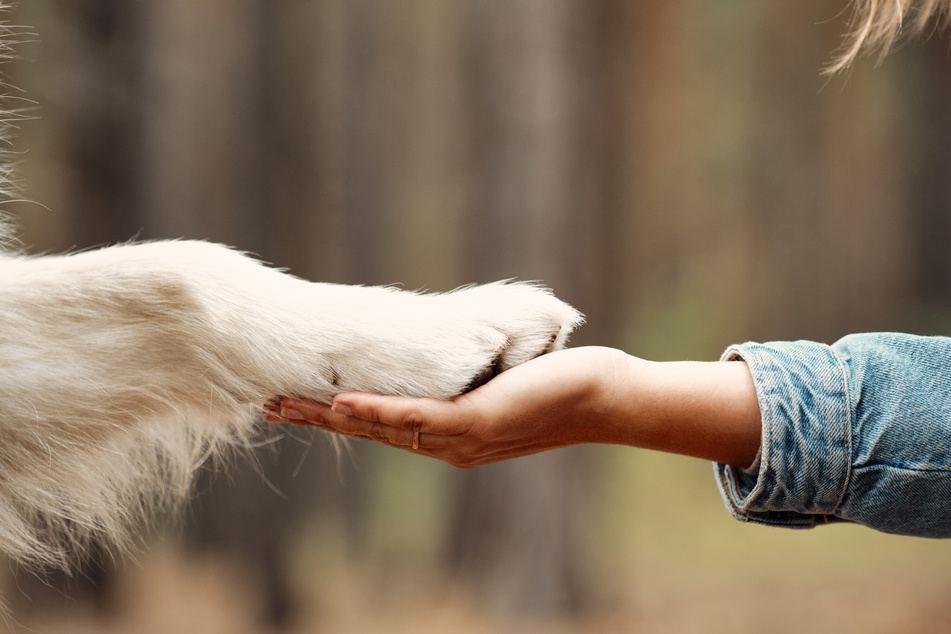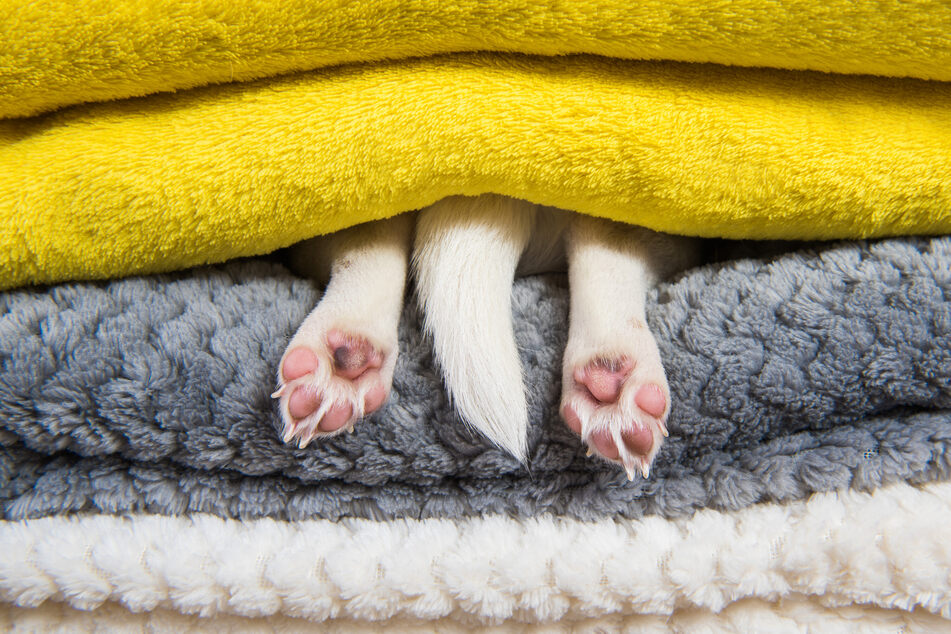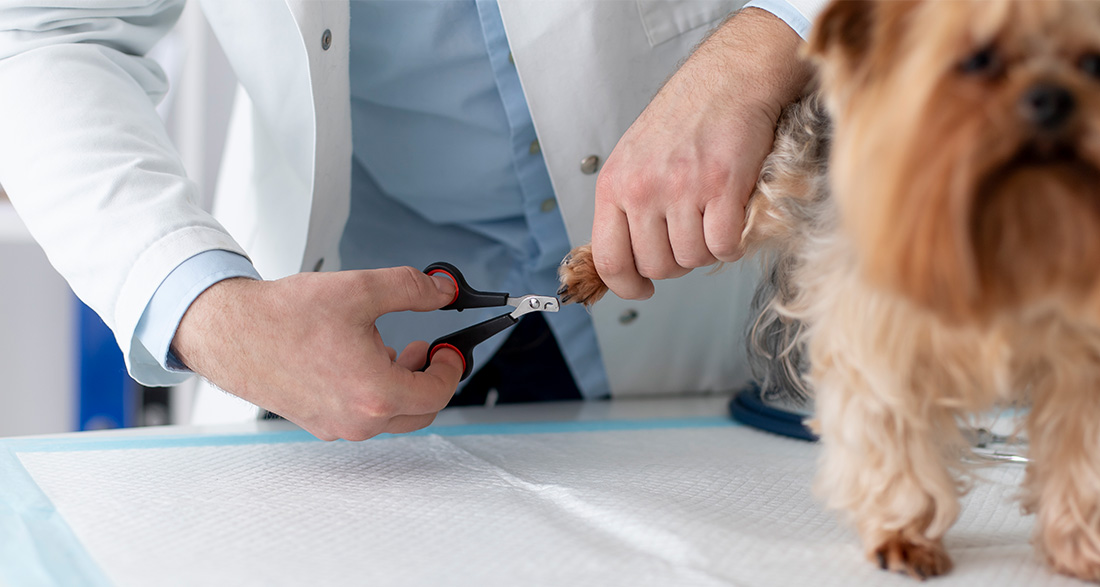Proper paw care for dogs is crucial not only in winter. That’s why this guide reveals what needs to be considered throughout the entire year.
Dog paws serve not only as your companion’s mode of transportation but are also highly sensitive. Due to daily walks in both warm and cold weather, they undergo significant strain, necessitating constant and appropriate care.
While many dog owners moisturize their furry friend’s paws in winter, does a four-legged companion not need good paw care in the summer as well? And does it require a specific cream, or do household remedies suffice?
The importance of paw care is underscored by the numerous diseases that can arise from neglecting it.
But no need to worry: iHugDogs explains how proper paw care for dogs works to prevent illnesses.
Caution!
Persistent complaints or injuries should always prompt seeking the assistance of a veterinarian.
Quick Facts:
- Paw care should be done regularly.
- Tools can be found in pet supplies.
- Home remedies can be effective.
- Paw care should happen in both winter and summer.
- The 7-second rule indicates how warm or cold the ground is.
- Lack of paw care can lead to diseases.
- In case of suspected frostbite or burns, consult a vet.
Paw Care for Dogs: How to Do It
To keep a four-legged friend spared from paw diseases in dogs, proper care should be taken.
The rule of thumb is: if the ground is extremely hot in summer or extremely cold in winter, the paws must be protected and cared for.
For a test, you can place your hand on the asphalt for seven seconds. This gives you an idea of the weather extremes the dog paws have to endure.
While dogs have an extra thick leather sole on their paws, certain things should be considered in the daily paw care routine.
How Daily Paw Care Works for Dogs

- Step 1: Keep the paws clean at all times. Remove dirt like stones, branches, dried soil, and grime.
- Step 2: Wash paws regularly, especially after getting dirty or in winter when dog paws need a thorough cleaning. They can be rinsed gently or wiped with a damp cloth.
- Step 3: Check and trim claws, paying special attention to the dog’s dewclaws. These don’t wear down on their own and need regular trimming.
- Step 4: Remove hair from the spaces between the paws. Hair clumps can form quickly, especially due to the dog’s saliva.
- Step 5: Regularly apply paw balm for dogs.
Additionally, attention should be paid to the right nutrition and sufficient vitamins and nutrients for the four-legged friend. Deficiencies and incorrect food can contribute to cracked paws and, consequently, paw diseases in dogs.
Paw Diseases in Dogs: When Lack of Care Leads to Illness

Cuts in a dog’s paw pads don’t initially indicate something serious. However, over time, bacteria, viruses, or fungi can settle in. Constant licking of dry and irritated paws promotes the growth of diseases.
Possible paw diseases in dogs include:
- Cracked paw pads
- Paw pad detachment in dogs
- Burns (hot asphalt, boiling water, cigarette butts)
- Pododermatitis
- Claw inflammation
- Fungal infections
To prevent a dog’s paws from becoming problematic, follow the grooming tips below.
Tip
Is your dog constantly nibbling and licking its paws? This could be a clear sign of a serious illness or neglected paw care.
Supporting Dog Paws in Winter
Cracked and dry paws are common in winter. Therefore, a rich paw cream from the pet store is an absolute must.
If a dog loves playing in the snow, ice chunks can quickly accumulate on its legs and paws. They should be gently removed with lukewarm water after a walk. Importantly, avoid using hot water, as the temperature difference from ice to heat can cause injuries to the dog.
In winter, pay attention to the following in paw care for dogs:
- 7-second test on cold ground
- Keep the dog away from road salt
- Dog boots as cold protection (though not every dog likes them)
- Gently remove snow clumps
- Clean and moisturize paws after every walk.
Caution! Road salt is the biggest danger to dog paws! The corrosive salt not only causes cracked and inflamed paws but also, when licked off, leads to gastrointestinal problems and, in the worst case, poisoning.
Paw Care for Dogs in Summer

In summer, it’s better to schedule walks in the morning and evening to avoid overheating the dog’s body and sensitive paws. Hot asphalt can prove dangerous, especially during midday hours. This can result not only in dry, cracked paws but also in burns.
If you feel the ground is too hot, it’s better to perform the 7-second test with your hand.
Additionally, in summer, pay attention to the following:
- Avoid asphalt surfaces
- Seek shaded areas
- Cool paws in rivers, streams, or lakes
- Moisturize paws after walks
- Use paw balm instead of paw cream
- In case of burns, cool paws immediately and consult a vet directly.
Paw Care for Dogs: Home Remedies Can Help
Vaseline, calendula salve, or perhaps a plant-based oil? For cracked paws, home remedies can indeed be helpful. Before starting the care ritual, it’s advisable to clean the paws thoroughly.
The best home remedies for cracked paws include:
- Shea oil
- Olive oil
- Coconut oil
- Vaseline
- Lanolin
If a dog often licks its paws, home remedies can only provide limited assistance. In such cases, it’s recommended to consult a veterinarian for a more detailed examination and diagnosis.
Conclusion: Regular Paw Care is Crucial for Dogs
Paw care for dogs requires a daily routine to prevent diseases and cracked paws. It’s essential to be aware of the dangers to the paws and always keep a close eye on them.
With the mentioned tips and products, a dog’s paws can remain soft and well-protected throughout every season.


